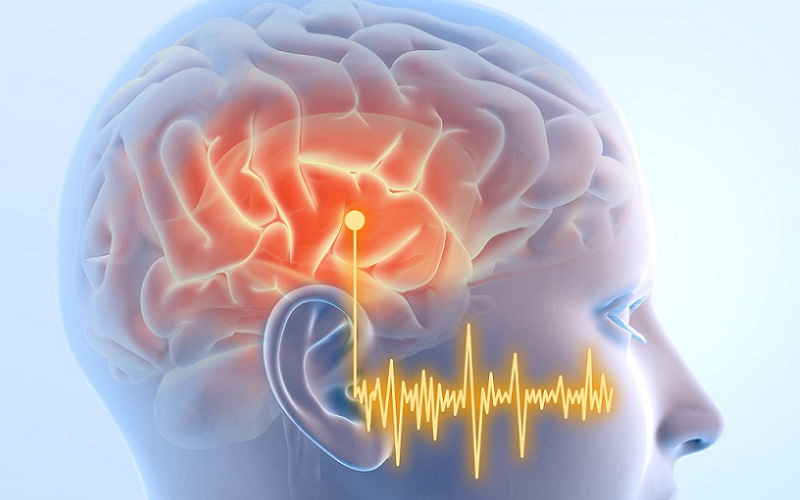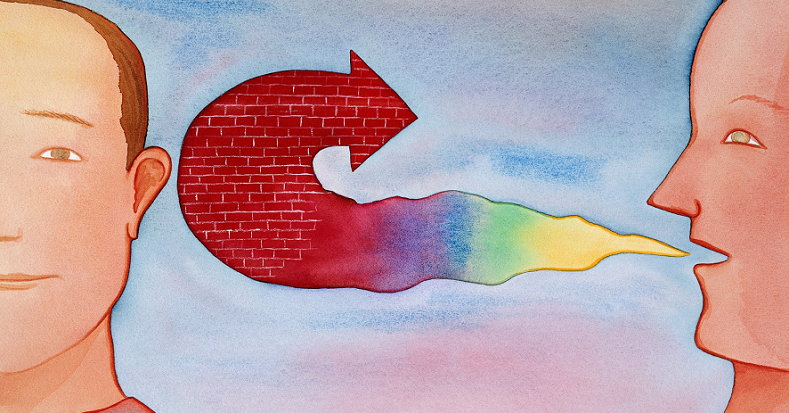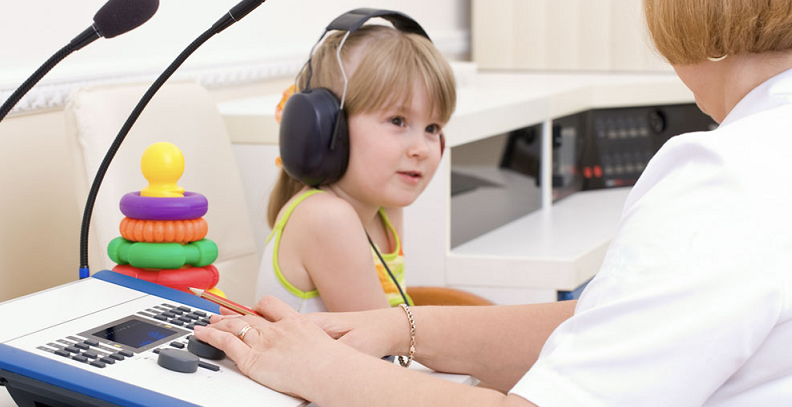
Auditory Processing Disorder (APD) is a complex and often misunderstood condition that affects the way an individual processes auditory information. It can lead to challenges in daily life, particularly in understanding speech and following verbal instructions. Early detection and intervention are crucial to ensure the best possible outcomes for individuals living with APD. Here we explore a comprehensive checklist for identifying symptoms, seeking professional diagnosis, and implementing effective strategies to manage APD.
Contents
- Introduction to Auditory Processing Disorder (APD)
- Identifying Symptoms and Warning Signs of APD
- APD Professional Diagnosis and Assessment
- APD Management and Intervention Strategies
- Supporting Individuals with APD
- References
Introduction to Auditory Processing Disorder (APD)
Auditory Processing Disorder (APD), also known as Central Auditory Processing Disorder (CAPD), is a neurological condition that affects how the brain processes auditory information. It is not a hearing problem but rather a difficulty in recognizing and interpreting sounds, particularly speech.
APD can significantly impact an individual’s daily life, making communication and learning more challenging. In this section, we will provide an overview of APD, its impact on daily life, and the importance of early detection and intervention.
Definition and Overview of APD
APD occurs when the brain has trouble processing and making sense of auditory signals, despite normal hearing ability. It is estimated to affect between 2% to 5% of children and can continue into adulthood if not properly managed. Individuals with APD may have difficulties in understanding spoken language, following multi-step directions, and discriminating between similar sounds. It is important to note that APD is not a result of cognitive or language disorders, though it may coexist with such conditions.
Impact on Daily Life
The challenges posed by APD can affect various aspects of an individual’s life, including academic performance, social interactions, and emotional well-being. Children with APD often struggle in school, as they may have difficulty understanding instructions, participating in classroom discussions, and keeping up with their peers [1].
This can lead to frustration, low self-esteem, and a higher risk of anxiety or depression. Adults with APD may experience challenges in the workplace and social settings, particularly when it comes to understanding speech in noisy environments or following complex conversations.
Importance of Early Detection and Intervention
Identifying APD early and providing appropriate support can significantly improve an individual’s ability to cope with the condition and reduce its impact on their daily life [2]. Early intervention can help to develop compensatory strategies, enhance communication skills, and prevent secondary issues such as academic difficulties, behavioral problems, or social isolation. The first step in addressing APD is recognizing the symptoms and seeking professional help for a comprehensive assessment and tailored intervention plan.

Identifying Symptoms and Warning Signs of APD
Recognizing the symptoms and warning signs of APD is essential for early detection and intervention. Symptoms can vary widely among individuals and may present differently in children and adults.
Common Symptoms in Children
Children with APD may exhibit a range of symptoms that can impact their learning, communication, and social skills [3]. Some of the most common symptoms include the following.
Difficulty Following Instructions
Children with APD may struggle to understand and follow verbal instructions, especially when they are multi-step or complex. This can lead to difficulties in the classroom and at home, as they may appear forgetful or inattentive.
Problems with Reading and Spelling
APD can make it challenging for children to process the sounds of letters and words, resulting in difficulties with reading and spelling. They may have trouble sounding out words or blending sounds together, which can impact their overall academic performance.
Struggling to Differentiate Sounds
Children with APD may find it hard to distinguish between similar sounds, such as “sh” and “ch” or “b” and “d.” This can make it difficult for them to understand speech, particularly in noisy environments or when multiple people are speaking.
Common Symptoms in Adults
While some adults with APD may have experienced symptoms since childhood, others may develop the condition later in life due to factors such as head injuries or age-related changes in the brain [4]. Common symptoms in adults include the following.
Trouble Understanding Speech in Noisy Environments
Adults with APD often have difficulty understanding speech in environments with background noise, such as restaurants or crowded gatherings. They may struggle to filter out irrelevant sounds and focus on the speaker, leading to communication challenges.
Mishearing or Misinterpreting Words
Individuals with APD may frequently mishear or misinterpret words, often confusing similar-sounding words or phrases. This can result in misunderstandings and communication breakdowns.
Difficulty with Localization of Sounds
Adults with APD may have trouble determining the source or direction of a sound, which can be disorienting and potentially unsafe, especially in situations like crossing a busy street.

APD Professional Diagnosis and Assessment
If you suspect that you or a loved one may have APD, it is crucial to seek professional help for a thorough assessment and accurate diagnosis.
Seeking Expert Help
APD is typically diagnosed by a team of professionals who have expertise in auditory processing, speech, language, and cognitive functioning. Some of the key professionals involved in the diagnostic process include:
Audiologists and Speech-Language Pathologists
Audiologists are professionals trained in the evaluation and management of hearing and balance disorders, while speech-language pathologists specialize in communication and swallowing disorders. These experts play a central role in diagnosing APD and developing a tailored intervention plan based on the individual’s unique needs.
The Role of a Multidisciplinary Team
In some cases, a multidisciplinary team may be involved in the assessment and diagnosis of APD. This team can include psychologists, occupational therapists, and educators who collaborate to develop a comprehensive understanding of the individual’s strengths and challenges across various domains.
Comprehensive Evaluation
A thorough assessment of auditory processing abilities typically involves a combination of audiological testing, speech and language assessment, and cognitive and behavioral evaluations. Some of the most common tests and assessments include the following.
Audiological Testing
Audiological tests evaluate an individual’s hearing sensitivity and the integrity of the auditory system. These tests may involve pure-tone audiometry, tympanometry, and otoacoustic emissions (OAEs) to rule out hearing loss or peripheral auditory problems.
Speech and Language Assessment
Speech-language pathologists assess an individual’s receptive and expressive language skills, as well as their phonological and articulation abilities. Standardized tests, informal assessments, and observations are used to identify any speech and language difficulties that may be related to APD.
Cognitive and Behavioral Assessments
Cognitive and behavioral assessments help determine whether the individual’s auditory processing difficulties are primarily due to APD or other factors such as attention, memory, or language disorders. Psychologists may administer standardized tests of cognitive abilities, attention, and memory, while occupational therapists may assess sensory processing and motor skills.
A comprehensive evaluation is essential to accurately diagnose APD and develop an effective, individualized intervention plan that addresses the specific needs and challenges of the person affected by the disorder [5].

APD Management and Intervention Strategies
Once an individual has been diagnosed with APD, it is essential to implement appropriate management and intervention strategies to minimize the impact of the disorder on their daily life.
Environmental Modifications
One of the key aspects of managing APD is creating an environment that supports better auditory processing. Some effective environmental modifications are listed here.
Reducing Background Noise
Minimizing background noise can help individuals with APD better focus on the sounds they need to hear. At home, this might involve turning off the television or radio when conversing, while in the classroom or workplace, it could mean designating a quiet space for learning or working.
Enhancing Signal-to-Noise Ratio
Improving the signal-to-noise ratio makes it easier for individuals with APD to process auditory information. This can be achieved by ensuring the speaker is close to the listener, using clear and concise language, and maintaining eye contact during conversations.
Seating Arrangements and Acoustics
Strategic seating arrangements, such as sitting close to the teacher or speaker and away from noise sources, can make a significant difference for individuals with APD. Additionally, optimizing the acoustics of a room by using carpeting or curtains to absorb echoes can further improve listening conditions.
Assistive Listening Devices (ALDs)
Assistive Listening Devices (ALDs) can be a valuable tool for individuals with APD, as they help amplify and clarify the sounds they need to hear [6]. Some commonly used ALDs include the following.
Personal Frequency Modulation (FM) Systems
FM systems consist of a microphone worn by the speaker and a receiver worn by the listener, transmitting the speaker’s voice directly to the listener’s ears. This can greatly enhance speech understanding, particularly in noisy environments.
Sound Field Systems
Sound field systems use speakers placed around a room to amplify and distribute sound evenly, ensuring that listeners can hear the speaker clearly regardless of their position in the room.
Infrared and Induction Loop Systems
These systems use infrared light or electromagnetic waves to transmit sound from a microphone directly to the listener’s hearing aids or headphones. They can be particularly useful in public settings such as theaters, classrooms, or places of worship.
Auditory Training and Therapy
Various auditory training programs and therapies can help individuals with APD improve their auditory processing skills [7]. Some popular options include:
Auditory Integration Training (AIT)
AIT involves listening to specially modified music or sounds through headphones to help retrain the brain’s auditory processing abilities. This therapy is typically administered by a trained professional over several weeks.
Fast ForWord Program
Fast ForWord is a computer-based program designed to improve language, reading, and cognitive skills by targeting the underlying auditory processing difficulties associated with APD.
Computer-Based Auditory Training (CBAT)
CBAT programs use interactive software to target specific auditory processing skills, such as sound discrimination, localization, and auditory memory. These programs can be customized to meet the unique needs and goals of the individual with APD.
Supporting Individuals with APD
Providing appropriate support for individuals with APD is crucial to help them overcome the challenges they face in daily life. Support from family, friends, educators, and employers can make a significant difference in the success and well-being of those affected by the disorder.
Family Support
Family members play a crucial role in providing emotional, social, and educational support to individuals with APD. Some effective ways to help a loved one with APD at home include:
Clear Communication
Speak clearly and at a moderate pace, using simple and concise language. Ensure that you have the person’s full attention before giving instructions, and consider using visual cues to supplement verbal information.
Encourage Active Listening
Teach the individual with APD to develop active listening strategies, such as repeating back what they have heard, asking for clarification when needed, and summarizing key points.
Foster a Supportive Environment
Create a supportive and understanding environment at home that encourages open communication and mutual respect. Be patient and empathetic, and acknowledge the challenges your loved one faces while also celebrating their strengths and achievements.
Educational Support
Educators can implement various strategies to support students with APD in the classroom, such as:
Classroom Accommodations
Make accommodations to help the student with APD succeed in the classroom, such as providing preferential seating, offering written or visual supplements to auditory information, and allowing extra time for processing instructions or completing tasks.
Differentiated Instruction
Use differentiated instruction techniques to accommodate the diverse learning needs of students with APD, including incorporating visual aids, hands-on activities, and small group instruction.
Collaboration with Support Professionals
Collaborate with support professionals, such as speech-language pathologists and occupational therapists, to develop and implement an Individualized Education Program (IEP) or 504 plan tailored to the student’s unique needs and goals.
Workplace Support
Employers and coworkers can help create a supportive and inclusive work environment for individuals with APD by:
Providing Reasonable Accommodations
Offer reasonable accommodations, such as access to assistive listening devices, flexible work schedules, or the option to work in a quiet space when needed.
Encouraging Clear Communication
Promote clear and concise communication in the workplace by providing written summaries of meetings, using visual aids during presentations, and ensuring that instructions are given one at a time.
Fostering a Supportive Culture
Create a supportive work culture that values diversity, inclusivity, and open communication. Encourage employees to ask for help or clarification when needed, and provide ongoing education about APD and other disabilities to promote understanding and empathy.
References
[1] Experiences of Patients With Auditory Processing Disorder
[2] Auditory Processing Disorder
[3] Auditory Processing – What You Always Wanted to Know
[4] Intervention Approaches for Individuals With (Central) Auditory Processing Disorder
[5] Auditory Processing Disorder: Symptoms, Diagnosis & Treatment
[6] Understanding Auditory Processing Disorders in Children
[7] What is an Auditory Processing Disorder?

